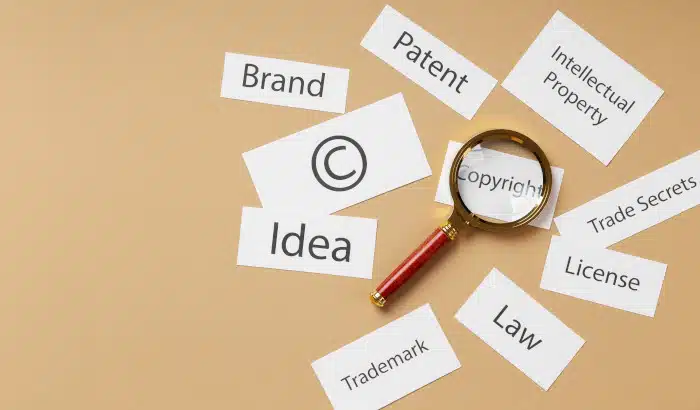Key Takeaways
- Inconsistent branding leads to confusion, lack of trust, and weakened brand messaging.
- Strong, consistent branding enhances brand recognition, trust, and customer loyalty.
- Identifying inconsistencies in logos, color schemes, tone of voice, and messaging is crucial.
- Developing brand guidelines, conducting brand audits, and training your team are essential steps to achieve consistency.
- Regular reviews and adaptation are key to maintaining a consistent brand identity.
Inconsistent branding can lead to significant challenges for businesses and organizations. We will give you the 5, 6, 7, and 8 of branding across your channels. You will read about five problems that arise due to inconsistent branding across your channels, six reasons why it is important to fix these problems, seven ways that can help you identify if you are making these mistakes, and eight ways to fix them that will help you achieve consistency with your branding. Let’s get started.
5 Problems that Arise from Inconsistent Branding
Imagine if a close friend suddenly changed their personality, appearance, and communication style every time you met them. Confusing and off-putting, right? That is exactly what inconsistent branding does to your audience. Here is a look at what the problem is and why.
1. Confusion
Inconsistent branding can lead to confusion among customers. When they encounter your brand on different platforms—whether it is your website, social media, or in-store—they might not recognize it as the same brand. This lack of uniformity can create doubt about your brand’s identity and purpose, making it difficult for customers to understand what you stand for.
2. Lack of Trust
Trust is fundamental in any relationship, and the same goes for brands. If your branding is inconsistent, it can give the impression that your brand is unprofessional or unreliable. Customers may question your commitment to quality or service, leading them to hesitate before engaging with your brand or making purchases.
3. Weakened Message
Your core brand message is crucial for connecting with your audience. However, when branding elements differ—like logos, colors, or messaging tone—your message becomes diluted. This inconsistency can obscure the values and benefits your brand aims to convey, making it harder for customers to grasp what sets you apart from competitors.
4. Reduced Brand Recall
When customers encounter inconsistent branding, it becomes challenging for them to remember your brand. A cohesive brand identity enhances memorability, while mixed signals can lead to forgetfulness. If customers cannot recall your brand, they are less likely to choose it over others when the time comes to make a purchasing decision.
5. Inefficient Marketing
Inconsistent branding undermines the cumulative effect of marketing efforts. Each touchpoint with your audience is an opportunity to reinforce your brand message. However, when these touchpoints lack consistency, you miss out on building a strong brand presence over time. This inefficiency can result in wasted resources and missed opportunities for engagement and growth.
Inconsistent branding creates significant hurdles for businesses, leading to confusion, lack of trust, weakened messaging, reduced brand recall, and inefficient marketing efforts. Each of these issues can create barriers between your brand and potential customers, making it difficult for them to form a clear understanding of who you are and what you represent. When customers encounter mixed signals, they may feel uncertain about engaging with your brand, leading them to seek alternatives that present a more reliable and cohesive identity. As a result, your marketing strategy’s overall effectiveness diminishes, and the resources invested in building your brand might go to waste.
Given the challenges posed by inconsistent branding, it becomes essential to understand the powerful advantages that come with maintaining a consistent brand identity. Consistency not only reinforces your brand message but also fosters trust and loyalty among your audience. In the following section, we will explore six compelling reasons why consistent branding is important for your business’s success.
6 Reasons Consistent Branding Helps Your Business – with Examples
Consistent branding is not only about aesthetics—it is about effective communication and relationship building. Here are six reasons why it matters:
1. Brand Recognition
Consistent branding significantly enhances brand recognition. When your logo, color scheme, and messaging are uniform across all platforms, customers can easily identify your brand in a crowded marketplace. This familiarity is crucial, as it helps your brand stand out in consumers’ minds. The more recognizable your brand is, the more likely it is that customers will choose it over competitors. Consistent branding transforms your brand into a familiar presence, making it easier for customers to recall and engage with you.
Example: McDonald’s
McDonald’s is known for its golden arches and consistent branding across its restaurants and advertising. The recognizable logo, color scheme (red and yellow), and uniform packaging make it easy for customers to identify McDonald’s anywhere in the world.
2. Trust
Trust is a cornerstone of consumer behavior, and consistent branding plays a vital role in building it. When customers see a cohesive brand image that reflects professionalism, they feel confident in their purchasing decisions. Inconsistency can lead to skepticism; if a brand appears to change frequently in its identity or messaging, customers may question its reliability and quality. By maintaining a steady brand presence, you instill confidence in your audience, fostering long-term relationships and encouraging repeat business.
Example: Volvo
Volvo has built a reputation for safety and reliability. Its consistent branding emphasizes these qualities through its marketing campaigns, vehicle designs, and messaging, which reinforces customer trust in the brand as a leader in automotive safety.
3. Customer Journey
A consistent branding experience enhances the overall customer journey. In today’s multi-channel world, customers interact with brands through various touchpoints—websites, social media, email newsletters, and physical stores. When these touchpoints present a unified brand image and message, it creates a seamless experience for customers. They feel more comfortable navigating your brand because the familiar elements guide them. This positive experience not only increases customer satisfaction but also encourages loyalty and repeat interactions.
Example: Target
Target creates a seamless customer journey with consistent branding across its stores, website, and advertisements. The familiar red and white color scheme, bullseye logo, and friendly store layout help customers feel comfortable and recognized at every touchpoint.
4. Marketing Strategy
Uniform branding is essential for an effective marketing strategy. When all marketing materials align with your brand identity, it amplifies the impact of your messaging. Consistent branding reinforces your brand’s values and mission across campaigns, making it easier for consumers to understand what your brand stands for. This cohesion helps create a strong emotional connection with your audience. Additionally, consistent marketing builds momentum over time, increasing brand recall and engagement.
Example: Dove
Dove’s “Real Beauty” campaign is a prime example of a consistent marketing strategy. The brand uses the same messaging about authenticity and self-esteem across various platforms, from television ads to social media, reinforcing its identity as a champion of natural beauty.
5. Easier Brand Expansion
A solid foundation of consistent branding makes it simpler to expand your product or service offerings. When customers already recognize and trust your established brand identity, they will embrace new products or services introduced under the same umbrella. For example, if you launch a new product line that aligns with your existing brand values and aesthetics, customers will feel more inclined to explore these latest offerings based on their positive experiences with your original products. This familiarity reduces the perceived risk associated with trying something new.
Example: LEGO
LEGO has successfully expanded its product lines—such as movies, video games, and themed sets—while maintaining consistent branding elements like its logo and core values of creativity and imagination. This familiarity helps customers easily embrace new offerings from the brand.
6. Competitive Advantage
In a competitive market, consistent branding provides a significant edge over rivals. A cohesive brand identity differentiates you from competitors, allowing consumers to see what makes your offerings unique. When customers can relate to a brand that
maintains consistency in its messaging and visuals, it becomes easier for them to choose you over others. A strong and reliable brand presence not only attracts new customers but also retains existing ones, solidifying your position in the market.
Example: Airbnb
Airbnb differentiates itself in the hospitality market through consistent branding that emphasizes belonging and community. The unique logo, user-friendly platform, and cohesive messaging across advertising give it a competitive advantage by creating a strong emotional connection with users looking for home-like travel experiences.
Consistent branding across all channels brings numerous benefits that lead to success. You can observe how well-known brands thrive because of their unified presence. Whether you are a large corporation or a small business, the advantages remain the same. A solid and consistent brand identity helps customers recognize and trust your offerings, making it easier for them to connect with your values. This solid foundation encourages repeat purchases, boosts word-of-mouth referrals, and ultimately supports long-term growth and success.
However, achieving this level of consistency can be challenging. Many brands unknowingly slip into patterns of inconsistency, which can undermine their efforts and damage their reputation. To ensure that your branding remains effective and cohesive, it’s important to be aware of the signs of inconsistent branding.
In the next section, we will explore seven key ways to identify if you are experiencing branding inconsistency—so you can take proactive steps to align your brand identity and strengthen your connection with your audience.
7 Ways to tell if you have Inconsistent Branding
To help you assess the effectiveness of your branding efforts, we have compiled a list of seven key observations that can indicate whether you have inconsistent branding. By recognizing these signs early, you can take proactive measures to create a more unified and impactful brand presence, ensuring that every touchpoint reflects your brand’s core identity and values. This will not only enhance customer recognition but also build a stronger emotional connection with your audience.
1. Different Logos
If your logo appears differently on your website, social media profiles, and printed materials, it can create confusion among your audience. A logo that varies in design, color, or style across different platforms can lead customers to question the authenticity of your brand. Consistency in logo usage is crucial for fostering brand recognition and trust.
2. Inconsistent Color Scheme
Using various color palettes across different channels can dilute your brand identity and make it harder for customers to recognize you. Colors evoke emotions and associations, so when your brand employs multiple color schemes, it can send mixed signals to your audience. This inconsistency may weaken the impact of your marketing efforts and confuse potential customers about your brand’s personality.
3. Varying Tone of Voice
If your brand communicates in a formal tone on one platform but shifts to a casual tone on another, it can create a jarring experience for your audience. This inconsistency might lead customers to feel unsure about your brand’s personality and values. A cohesive tone of voice helps establish a clear identity, and varying tones can undermine the connection you are trying to build with your audience.
4. Mismatched Messaging
When your core message or tagline changes across different channels, it can cause misunderstandings about what your brand stands for. If customers encounter conflicting messages, they may find it challenging to grasp the essence of your brand. This inconsistency can weaken customer loyalty and diminish the overall effectiveness of your marketing strategy.
5. Inconsistent Visual Style
If the overall look and feel of your brand varies significantly between platforms, it can weaken brand recognition and create a sense of disconnection. For example, differing fonts, image styles, or layouts can make it difficult for customers to associate various touchpoints with your brand. A consistent visual style is vital for establishing a recognizable presence in a crowded marketplace.
6. Customer Confusion
When you receive feedback indicating that customers find your brand confusing or hard to recognize, it is a clear sign that inconsistencies exist. If customers cannot easily identify or understand your brand, they may lose interest or turn to competitors. This confusion can result from discrepancies in branding elements, messaging, or overall presentation.
7. Lack of Brand Guidelines
Not having a comprehensive guide for your brand’s visual and verbal identity can lead to inconsistencies across different channels and materials. Without established guidelines, team members might inadvertently use different logos, colors, or messaging styles, which can dilute your brand’s impact. A lack of clear direction makes it difficult for everyone involved in marketing efforts to stay aligned with the brand’s vision and identity.
Recognizing the signs of inconsistent branding is the first step toward creating a unified and impactful brand identity. By identifying areas where your branding may be falling short, you can take meaningful action to address these inconsistencies and strengthen your overall presence. Now that you have identified the ways in which your branding may be inconsistent, it is time to focus on solutions. In the next section, we will explore eight effective strategies to fix inconsistent branding.
8 Ways to Have Consistent Branding
Addressing inconsistent branding requires a strategic approach to ensure that your brand presents a unified front across all platforms and interactions. Here is how to get started:
1. Develop Brand Guidelines
Creating comprehensive brand guidelines is crucial for establishing a clear and consistent identity. This document should serve as your brand’s bible, outlining essential visual elements such as logos, color palettes, typography, and imagery styles. Additionally, it should define your brand’s tone of voice, messaging, and core values. By having a detailed guide, you can ensure that anyone involved in creating branded content has a clear understanding of how to represent your brand effectively.
How to Do It: Start by outlining the key elements of your brand, including your logo, color palette, typography, imagery, and tone of voice. Create a document that details the appropriate usage of each element, including dos and don’ts. Consider including examples of branded materials that exemplify the guidelines. Share this document with all team members and make it easily accessible.
2. Conduct a Brand Audit
Take the time to review all your digital channels, including your website, social media profiles, email communications, and any other touchpoints where your brand is present. Identify inconsistencies in visuals, messaging, and overall presentation. Make a thorough list of what needs to change and prioritize these items based on their impact on your brand perception. This audit will provide a roadmap for the necessary adjustments.
How to Do It: Review all your digital channels, such as your website, social media profiles, email newsletters, and any promotional materials. Create a checklist to evaluate each platform against your brand guidelines. Note any inconsistencies in visuals and messaging. Prioritize the discrepancies based on their impact on brand perception and develop a plan for addressing each item.
3. Create Templates
To further ensure consistency, develop templates for various content types, such as social media posts, email newsletters, blog headers, and marketing materials. Templates help maintain uniformity in design and messaging, reducing the likelihood of discrepancies arising during content creation. Make sure these templates adhere to your brand guidelines, providing a solid foundation for all branded communications.
How to Do It: Design templates for different content types, including social media posts, email campaigns, blog headers, and marketing brochures. Use design software like Canva or Adobe InDesign to create these templates, ensuring they align with your brand guidelines. Save these templates in a shared drive or brand management tool so team members can easily access and use them when creating content.
4. Train Your Team
It is essential that everyone involved in creating branded content understands and follows the established guidelines. Hold training sessions to educate your team about the importance of consistent branding and how to implement the guidelines effectively. Provide examples of both successful and inconsistent branding to illustrate the impact on brand perception. Ongoing education ensures that team members remain aligned with the brand’s vision.
How to Do It: Organize training sessions or workshops to educate your team about the importance of consistent branding. Use real-life examples to illustrate both successful and inconsistent branding efforts. Provide hands-on training on how to use the brand guidelines and templates effectively. Create a feedback loop where team members can ask questions and share ideas related to branding.
5. Use Brand Management Tools
Implementing brand management tools can streamline the process of maintaining consistency across channels. Digital asset management systems can help organize and store all brand assets in one place, making it easy for team members to access the correct logos, images, and templates. These tools can also facilitate collaboration and version control, ensuring that everyone is working with the most up-to-date materials.
How to Do It: Research and implement digital asset management systems, such as Brandfolder or Bynder, that allow you to store and organize all brand assets in one central location. Set up user permissions so that team members can access the correct logos, images, and templates while maintaining version control. Regularly update this system with new assets and ensure everyone knows how to use it.
6. Regular Reviews
Consistency is not a one-time effort; it requires ongoing attention. Conduct periodic brand audits to catch and correct any inconsistencies that may creep in over time. Schedule regular reviews of your branding efforts to assess their effectiveness and make necessary adjustments based on feedback or changing market conditions. This proactive approach will help keep your brand identity strong and cohesive.
How to Do It: Schedule periodic brand audits—perhaps quarterly or biannually—to evaluate your branding efforts continuously. Create a checklist based on your brand guidelines and review each touchpoint for consistency. After the audit, hold a team meeting to discuss findings and develop action plans for addressing any identified inconsistencies.
7. Adapt Thoughtfully
When adapting your brand for different channels or audiences, it is important to ensure that the core identity remains intact. While you may need to adjust certain elements—such as tone or format—to suit specific platforms, always align these variations with your overall brand message and values. Thoughtful adaptation helps maintain recognition while allowing flexibility in communication style.
How to Do It: When modifying your brand for different channels, create a set of guidelines for adaptation. For example, define how your tone of voice might vary between social media and email marketing while maintaining core messaging—draft example communications for various platforms that showcase the necessary adaptations without compromising the brand’s identity.
8. Consistency in Customer Service
Lastly, ensure that your brand voice is consistent in all customer interactions. Customer service is a critical touchpoint where your brand identity comes to life. Train your customer service team on how to communicate with customers in a manner that reflects your brand’s tone and values. This consistency will reinforce trust and loyalty among your audience.
How to Do It: Develop a customer service manual that outlines how representatives should communicate with customers in line with your brand voice. Conduct training sessions focused on brand values and tone of voice, ensuring representatives understand how to reflect these in their interactions. Encourage staff to use scripts or templates that align with your brand guidelines when responding to customer inquiries.
Remember, achieving brand consistency is an ongoing process. It requires vigilance and commitment from everyone in your organization. But the payoff is significant. A consistent brand builds recognition, trust, and loyalty—key ingredients for successful digital marketing.
Do not let inconsistent branding undermine your digital marketing efforts. Take the time to define your brand clearly, create guidelines, and ensure you follow these across all channels. Watch as your brand becomes more recognizable, your message is more powerful, and your marketing more effective.
If your marketing efforts are not reaching their desired outcomes, or you need assistance with your branding and messaging, do not hesitate to contact Techna. Let us help you invest in clarity and create a pathway toward sustainable growth and success in your digital marketing initiatives.
This has been part of our 10 Common Mistakes You May Be Making In Digital Marketing And How To Fix Them Series. To learn more about the other 9 mistakes you may be making and how to fix them, check them out here.
Download The Brand Consistency Audit Checklist
Fill out the form to download Brand Consistency Audit Checklist PDF





